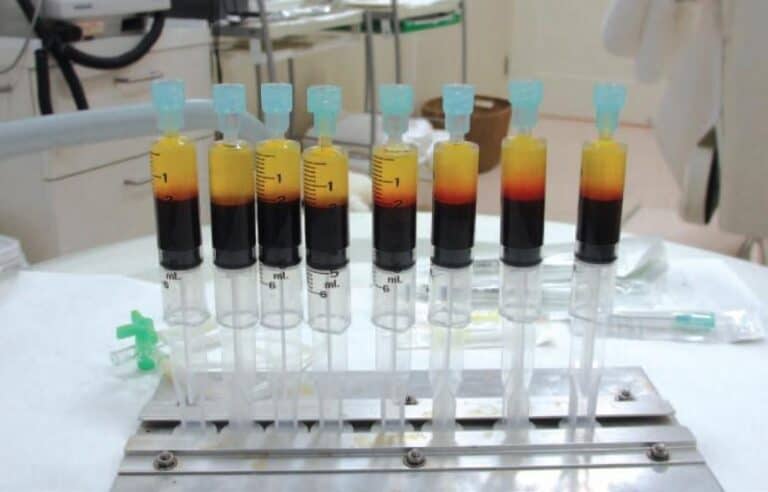Uncovering the Causes of Breast Implant Rippling
Breast implant rippling is a condition that affects many women who have undergone breast augmentation surgery. It is characterized by the appearance of visible or palpable ripples in the implant, which can be seen or felt through the skin. This article will discuss the causes, symptoms, and treatment options for breast implant rippling.
Definition of Breast Implant Rippling
Breast implant rippling occurs when the implant’s outer shell begins to thin and fold inward, causing a ripple-like effect beneath the skin. This most commonly occurs with saline implants, as they are filled with a liquid solution that allows them to collapse more easily than silicone implants. The ripples can be seen or felt through the skin and can cause discomfort or pain in some cases.
Overview of Breast Implant Surgery
Breast implant surgery is a surgical procedure used to increase the size and shape of a woman’s breasts. During this procedure, an incision is made in either the armpit, crease below the breast, or around the areola (the dark area around the nipple). The surgeon then inserts an implant behind each breast tissue pocket and closes the incision. Depending on patient preference, implants may be filled with either saline (salt water) or silicone gel.
Causes of Rippling
Breast implant rippling is an issue that can occur after breast augmentation surgery. Rippling occurs when the implant is visible or detectable through the skin, often in the form of visible wrinkles or folds. It is important to understand what causes rippling in order to prevent it from occurring.
Types of Implants
The type of implants used during breast augmentation surgery can affect the likelihood of rippling. saline implants are more likely to cause rippling than silicone implants due to their lack of flexibility and light weight. In addition, textured implants are more prone to rippling than smooth implants because they are less cohesive and do not adhere as firmly to the surrounding tissue.
Size and Placement of Implants
The size and placement of the implants also plays a role in the occurrence of rippling. If the implants are too large for a patient’s body, they may be more prone to shifting and causing ripples in the skin. In addition, if the implants are placed too close to the surface of the chest wall, they may be more likely to cause visible wrinkling or folding.
Incision Location
The location where incisions are made during breast augmentation surgery can also influence whether or not rippling will occur. If incisions are made near thin areas such as around the armpit or along the lower crease of the breast, they may be more prone to developing wrinkles or folds due to pressure from the implant.
Post-Surgery Care
Proper post-surgery care is essential for preventing rippling from occurring after breast augmentation surgery. Patients should follow all instructions given by their surgeon carefully, including avoiding activities that involve heavy lifting or strenuous exercise for at least six weeks after surgery to give their body time to heal properly and reduce pressure on their implants.
Other Factors
In some cases, certain medical conditions such as diabetes or connective tissue disorders may make a patient more susceptible to developing ripples in their skin after breast augmentation surgery. Additionally, smoking can delay healing and increase a patient’s risk for developing visible wrinkles or folds around their implants.
Rippling can be caused by type of implant, size/placement, incision location, post-surgery care, and medical conditions/smoking.
Symptoms
Breast implant rippling can cause a variety of symptoms that may be visible or detectable by touch. It is important to be aware of these symptoms and speak with your doctor if you experience any of them.
Visible Rippling
One of the most common symptoms of breast implant rippling is visible rippling on the surface of the implant. This can occur when the implant is placed too close to the skin, or when there is not enough tissue surrounding it. The ripple effect is usually more noticeable in thin patients, since there is less tissue for the implant to hide behind. Visible rippling can also be caused by an uneven distribution of saline solution inside the implant, which can cause one side to have more pressure than the other.
Detectable by Touch
In some cases, breast implant rippling may not be visible but can still be detected by touch. This occurs when there are irregularities in the surface of the implant that are not visible to the naked eye. These irregularities can range from small bumps to larger ridges, and they can often be felt through clothing or during physical activity.
Other Symptoms to Look Out For
Other symptoms associated with breast implant rippling include pain and discomfort in the area, as well as changes in sensation or sensitivity in the area. In some cases, patients may also experience an overall change in breast shape due to irregularity in the placement or size of their implants. If you experience any of these symptoms, it is important to speak with your doctor as soon as possible so that treatment options can be explored.
Treatment Options
Breast implant rippling can be a concerning issue for those who have had breast augmentation. Fortunately, there are several treatment options available to help address this issue.
Breast Implant Revision Surgery
The most common and effective treatment for breast implant rippling is revision surgery. This type of procedure involves removing the existing implants and replacing them with new ones. During the procedure, the surgeon will evaluate the size and shape of the breasts to determine what type of implant will be used. The implant size, shape, and placement must all be carefully considered to ensure that the results are aesthetically pleasing while avoiding any further issues with rippling. Additionally, if the incision location was a factor in causing rippling in the first place, it may need to be moved during revision surgery.
Before undergoing this type of surgery, it is important to understand both its benefits and risks. The primary benefit of breast implant revision surgery is that it can drastically reduce or even eliminate visible or tactile rippling. It also provides an opportunity for patients to customize their implants to achieve their desired look and feel. However, as with any surgical procedure, there are potential risks involved such as infection and scarring.
Other Treatment Options
In some cases, revision surgery may not be necessary or possible due to medical reasons or other factors. In these instances, there are other treatment options available that can help reduce the appearance of rippling without requiring another surgery. These include dermal fillers and fat transfer procedures which can provide additional volume underneath the skin where rippling is occurring. While these treatments may not completely eliminate rippling, they can help improve its appearance significantly while providing a more natural look than traditional breast implants alone could provide.
Additionally, there are several lifestyle changes that can help reduce the visibility of rippling as well as prevent it from occurring in the first place. These include maintaining a healthy weight through diet and exercise, avoiding activities that involve excessive bouncing or jarring motions (such as running), wearing supportive bras during physical activity, and avoiding sun exposure directly on the breasts for long periods of time.
Overall, there are several treatment options available for those suffering from breast implant rippling depending on their individual situation and preferences. It is important to speak with a qualified plastic surgeon who specializes in breast augmentation procedures in order to determine which option would be best suited for you based on your specific needs and goals.
Conclusion
Breast implant rippling is an uncommon but potentially bothersome side effect of breast augmentation surgery. While there are a few factors that can increase the risk of rippling, such as implant size and placement, it is important to understand that even the most experienced surgeons may not be able to completely prevent rippling in some cases. The good news is that if you experience any symptoms of rippling, there are several treatment options available to help reduce its appearance. Breast implant revision surgery can be used to replace or reposition existing implants, while other procedures such as fat transfer and dermal fillers can also be used to correct the look of rippling. Ultimately, it is important to consult with your doctor for more information on the best course of action for your individual needs.
Rippling is an uncommon side effect of breast augmentation surgery, but treatments are available to reduce its appearance.






